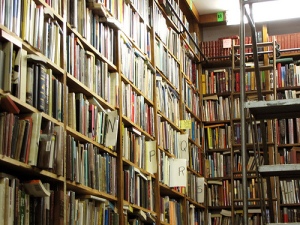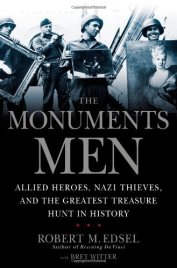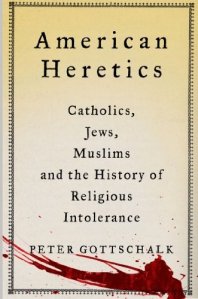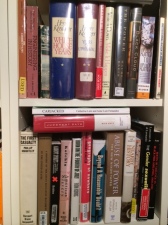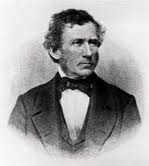 I have been researching the life and times of Daniel Drake for a few years now. Originally I wanted to publish an article to help me get into grad school but that has been put on hold. That might be a good thing if it depends on me publishing an article. Studying a persons life turns out to be much easier when you understand the times they lived in, if you don’t understand their times you will miss most of the story.
I have been researching the life and times of Daniel Drake for a few years now. Originally I wanted to publish an article to help me get into grad school but that has been put on hold. That might be a good thing if it depends on me publishing an article. Studying a persons life turns out to be much easier when you understand the times they lived in, if you don’t understand their times you will miss most of the story.
In June of 1810 Drake published his first book, “Notices concerning Cincinnati”*. In this book he looks at the natural environment around his new home town. He examines the geology, botany, zoology, and climate, especially the climate, and publishes it all for the benefit of his new neighbors. I will come back to how it was going to benefit his neighbors later. For now I want to look at his focus on the climate. In addition to creating charts comparing the high and low temperatures in Cincinnati and Philadelphia he mentions a book by Constantin François de Chassebœuf, comte de Volney (Constantin Volney) titled “A view of the Climate and Soil of the United States of America: with supplementary remarks opon Florida: on the French Colonies on the Mississippi and Ohio, and in Canada; and on the Aboriginal Tribes of America” and disputes the claim that “Trees and herbs are found on the western side of the mountains, three degrees farther north than the same products are found spontaneously growing on the eastern side” (pg 122 {161 of the pdf}). Volney also claimed that cotton thrived near Cincinnati.
Almost a year later Drake wrote two letters, one to the science section of the Philadelphia “Port Folio”, and another published as an editorial in Cincinnati’s “Western Spy” pointing out the errors in Volney’s work. In February of 1816 Drake’s second book, “Natural and statistical view; or picture of Cincinnati and the Miami country, illustrated by maps. With an appendix, containing observations on the late earthquakes, the aurora borealis, and the south-west wind”, was published and he arranged through an acquaintance who worked for the government to send a copy to Thomas Jefferson. This book covered much of the same ground as the first but this one was the 19th century equivalent of 20th century boosterism and marketing designed to draw settlers to the area.
Why did Drake send a copy to Jefferson? A previous biographer of Drake claims there are letters that might shed some light on that question but so far I haven’t found them. I have a few theories, it could be that Jefferson was chosen because of his known interest in the sciences, after all he organized the Lewis and Clark expeditions to investigate the same natural phenomenon that Drake was writing about. Or it could relate to Jefferson’s relationship with Volney. Jefferson worked with Volney to translate Volney’s book “The Ruins, Or, a Survey of the Revolutions of Empires” into English and he admired Volney’s intellect. But what did Drake hope to gain by pointing out what he saw as errors made by a respected European scholar?
Maybe he was after the truth? If you look at today’s USDA Plant Hardiness Chart you will see that the zones rise as they go east, not west as Volney wrote, the climate is tougher as you travel west. It turns out that Drake and Volney were just early entries in a debate that raged during the the 19th century. Were settlers causing climate change by clearing vast areas of forest?
That is not as absurd as it might sound to us in the 21st century. At that time everyone knew that it was cooler in a forest than in an open field even if they did not understand the “swamp-cooler” effect of transpiration. I am less sure if they understood that deforestation can also lead to desertification. Thanks to James Rogers Fleming’s book “Meteorology in America, 1800-1870” I understand that a few decades earlier nobody would have asked the question. Climate, like its child weather, was totally dependent on God’s Will. When a thunderstorm came it was because people had offended God and he let loose demons on the world. People gathered to pray for God’s favor and rang church bells to frighten the demons away. Then Ben Franklin began investigating weather and demonstrated that lightning was just electricity their fear was slowly replaced by curiosity.
Drake and Volney were just two of the earliest to join the weather debate. Until dependable barometers and hydrometers were developed, approximately the 1830s, the discussion was mostly hypothetical, based on only a few years of spotty data on temperature and rainfall. The US Army Medical Department was one of the first institutions to encourage investigation into the nature of the weather. You see a few thousand years earlier some Greek physicians theorized that disease was caused by bad air and ever since physicians have been interested in weather and the local environment.
Drake’s first published writing, “Some Account of the Epidemic Disease Which Prevail at Mays-Lick in Kentucky”* an article for the Philadelphia Medical and Physical Journal published in 1808, two years after Drake spent a year in the Philadelphia Medical College. At the time writing such an essay examining the disease potential of a town’s climate and geology was one of the requirements for receiving a medical degree. Dr. Benjamin Dudley’s thesis, “A sketch of the medical topography of Lexington and its vicinity : being an inaugural dissertation, submitted to the examination of the Rev. John Andrews …, the Trustees, and medical faculty of the University of Pennsylvania, on the 21st day of April, 1806, for the degree of Doctor of Medicine” is online at the National Library of Medicine.
Achieving an understanding of the times someone lived in can be as time consuming as researching the details of their life. It can be also be very distracting. If you are curious about how the Army Medical Department became concerned with weather and disease I suggest you look at Elizabeth Anne Fenn’s book “Pox Americana: The Great Smallpox Epidemic of 1775-82”.
* reprinted in full in Drake, Daniel, Henry D. Shapiro, and Zane L. Miller. Physician to the West: selected writings of Daniel Drake on science & society. Lexington: University Press of Kentucky, 1970.

